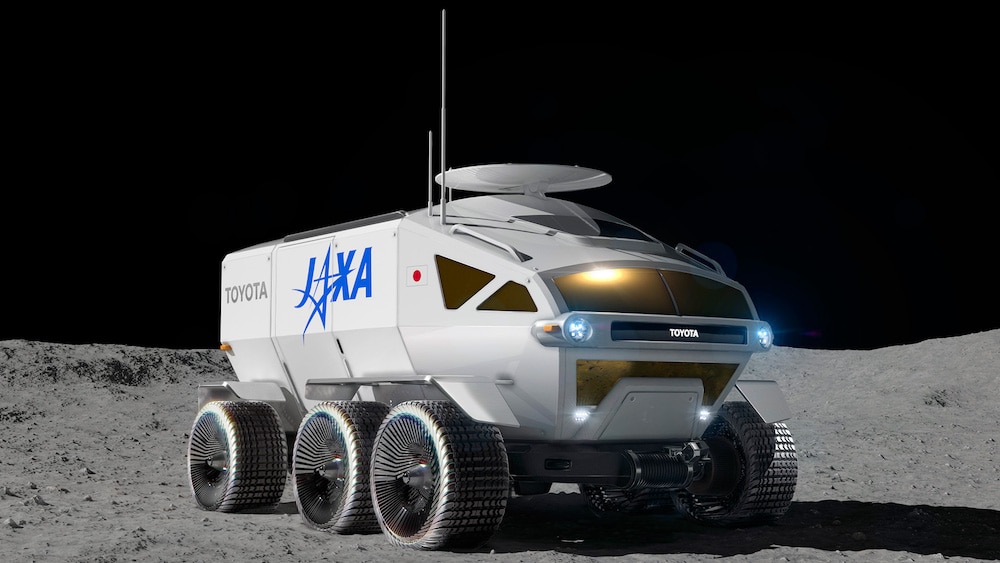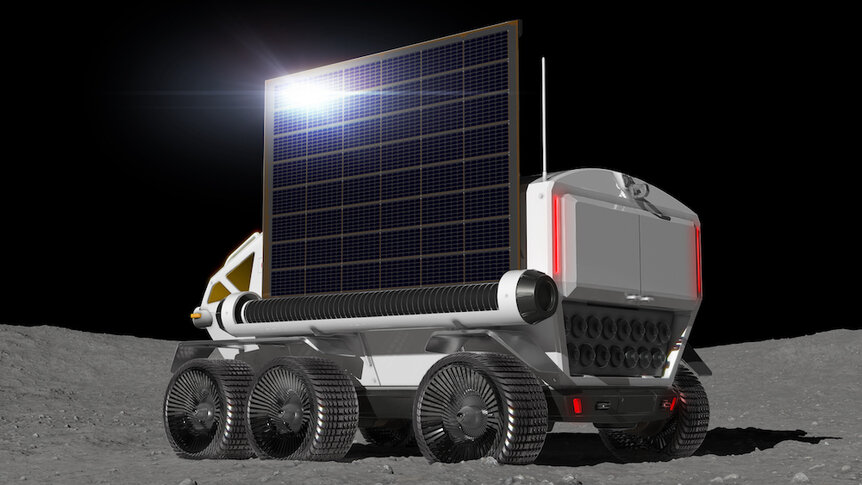Create a free profile to get unlimited access to exclusive videos, sweepstakes, and more!
Lunar rovers are getting an upgrade with first Toyota that’s truly an all-terrain Cruiser
We wonder if it has heated seats?

The race to the Moon is back on! NASA has made clear their intention to return humans to the lunar surface later this decade. While the original target date of 2024 for a crewed landing has been pushed back, Artemis 1 is currently scheduled for spring of 2022. The mission will serve as an uncrewed test flight of NASA’s new Space Launch System.
Unlike the last time we went to the Moon, the current space race isn’t being run solely by government agencies. Commercial entities including SpaceX and Blue Origin have their sites set on Earth’s nearest cosmic neighbor and they aren’t the only ones.
Toyota has signed an agreement with the Japan Aerospace Exploration Agency for the development of a new lunar vehicle known as the Lunar Cruiser. The vehicle’s name was chosen as an homage to Toyota’s well-known Land Cruiser line, only this time the land it will be cruising is on another world.
To date, vehicles developed for use on other worlds, also commonly known as rovers, have been unpressurized, and with the exception of the Lunar Roving Vehicle used during Apollo 15 through 17, they have been operated remotely from Earth. The Lunar Cruiser ups the ante by being both pressurized and designed for use by an onboard crew.
At current, the Lunar Cruiser is only a concept. Research teams working on the vehicle are using simulations to nail down power and heat dissipation thresholds of the Cruiser when it’s in use. The layout of the Cruiser is also being developed, both with the use of full-scale models and virtual reality mockups.
In addition to Toyota, robotics startup Gitai Japan Inc. has entered into the partnership and is developing a robotic arm for use on the Lunar Cruiser. In order to maximize its utility on the Moon, Gitai has built a specialized attachment port called a grapple end effector. This allows the end of the arm to be swapped out with various tools, each of which might be specialized for a particular task. The goal is for the arm to be used for inspection and maintenance of the vehicle as well as lunar surface activities like manipulating and collecting objects. Gitai has already delivered a prototype of the robotic arm to Toyota.
The Lunar Roving Vehicle was battery powered, and Mars rovers like Perseverance are powered by heat generated from radioactive decay of plutonium, but the Lunar Cruiser is doing something different. The vehicle is planned to be powered by hydrogen fuel cells which emit water instead of the particulates typical of Earth-based vehicles. According to Toyota, the Cruiser will have a range of 10,000 kilometers, which is nearly enough to circumnavigate the Moon. Mockups of the vehicle also show a large array of solar panels which could supplement the fuel supply or power onboard machinery.
While JAXA hasn’t announced any plans for their astronauts to become the first ever lunar Magellans, they do have big plans for their new vehicle. JAXA is planning to launch the craft to the Moon in the second half of the decade and that’s only the beginning. According to comments provided to the Associated Press, the aim of the Lunar Cruiser is to allow people to live and work on the Moon by the 2040s. They plan to ultimately take the technology on to Mars, as well.
If accomplished, this would be the first ever pressurized rover sent to the Moon, allowing astronauts to complete at least some surface activities without the necessity of spacesuits. They’d also have the ability to use the Cruiser as a mobile base, taking tools and instruments with them to various locations, rather than being confined to areas within walking distance of the landing site.
If Toyota succeeds in their goal of providing a vehicle for use by lunar colonists in the next few decades, it’s likely other car manufacturers will follow suit. Before long, you’ll have your choice of sweet ride for cruising the maria and craters. Let’s just hope the lunar surface isn’t destined for used car lots.



























